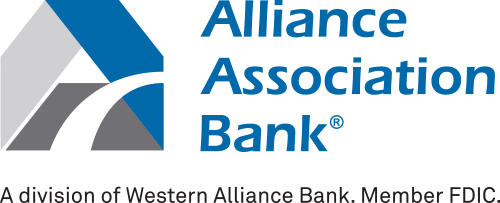How To Exercise Robert’s Rules Of Order Discipline

According to Robert's Rules of Order, maintaining discipline is essential for the smooth functioning of an organization. Members must consistently uphold courtesy, politeness, and professionalism, even during debates. When an assembly faces disruptive behavior from members, several methods exist to address the issue.
Browse By Category
Sign up for Our Newsletter
According to Robert’s Rules of Order, maintaining discipline is essential for the smooth functioning of an organization. Members must consistently uphold courtesy, politeness, and professionalism, even during debates. When an assembly faces disruptive behavior from members, several methods exist to address the issue.
What Does Robert’s Rules of Order Say About Discipline of Members?
During heated debates on controversial issues in meetings, some members may exhibit excessive enthusiasm, speaking out of turn and repeatedly seeking the floor to counter those with opposing views. In such situations, the chair should maintain composure and gently remind the member of the proper debate rules. If the member is reasonable, no further action may be necessary.
If the disruptive behavior persists despite the chair’s remarks, the chair’s next option is to call the member to order. Should the member refuse to comply, the chair can name the offender. However, this should come as a final option, similar to pressing charges against the member.
Before proceeding, the chair instructs the secretary to document the disruptive behavior or words. When naming the offender, the chair uses the member’s name and specifies the wrongdoing. If the member complies, the assembly can decide whether to leave the matter alone or consider imposing a penalty.
It is worth noting that there is no procedure for filing a grievance in Robert’s Rules of Order.
How to Penalize Unruly Members
The assembly retains the exclusive authority to impose penalties for misbehavior, as the chair lacks the power to enforce such actions. A member can actively propose a motion suggesting a penalty. Alternatively, the chair can inquire whether the assembly desires to impose one.
Minimal penalties may involve requesting the unruly member apologize, while the assembly can also temporarily suspend the member’s rights. In specific organizations, excluding homeowners associations, the assembly has the authority to entirely expel a member from the organization.
In Robert’s Rules, two common methods for disciplining disruptive members are removing them from the assembly hall and censuring them.
1. Remove the Member from the Assembly Hall
The assembly can dismiss any participant from the meeting. The chair can exclude non-members, with no right of appeal for the latter. It’s crucial to emphasize that members can appeal on behalf of non-members. When removing a member from the hall, the assembly must submit the matter to a vote.
If the assembly decides to expel an individual from the hall and they don’t comply, the chair must do its best to enforce the decision. The chair can assign a committee or direct the sergeant-at-arms to conduct the removal. Exercise caution, though, to prevent exposing the organization to legal liabilities. The chair might also involve law enforcement, although they may refuse to involve themselves unless the organization presses charges.
2. Censure the Member
Censuring a member involves alerting them to the possibility of facing suspension or expulsion if their conduct fails to improve.
- Objective: The objective is to censure the member to promote reform and prevent a repetition of the behavior.
- Needs a second? Yes.
- Amendable? Yes.
- Debatable? Yes.
- Majority vote required? Yes.
- Reconsideration possible? No.
- Outcome: The member is issued a warning, signaling that continuous faults could lead to suspension, expulsion from membership, or removal from office.
As an incidental main motion, this motion is only allowed in the absence of any pending business. Both incidental and subsidiary motions are relevant to this proposition. The member or officer undergoing censure may present their defense during the debate but can’t vote on the matter. Interestingly, a member cannot face censure twice for the same offense.
Robert’s Rules of Order on Discipline: Censurable Offenses
Censure may take place as a result of the following behaviors:
- Absenteeism
- Breaching confidentiality
- Breaching organization values
- Bribery
- Conspiracy
- Disloyalty
- Fraud
- Lying
- Misconduct at meetings
- Moral misconduct outside of the meeting
- Working against the organization
It’s worth noting that not all these apply to all organizations, such as homeowners associations.
Robert’s Rules of Order: Censure Members and Officers
There are two ways to censure members:
- If the chair identifies an unruly member and requests a penalty, another member can propose a motion for censure.
- Should members recognize the unruly member’s conduct and want to highlight it during the assembly, they can introduce a motion for censure during the New Business segment of the agenda.
Apart from the offenses outlined above, the assembly may also censure officers if they fail to fulfill their responsibilities or work outside their designated duties. The assembly may censure the presiding officer if they breach parliamentary rules or infringe on the basic rights of members.
Here is how to censure a presiding officer:
- A member initiates the motion with the vice president.
- In the event of the vice president’s absence or failure to acknowledge the motion, the member may then direct the motion to the secretary.
- If the secretary is unavailable or declines to address the motion, the member has the option to present it to the assembly.
- The presiding officer may present a defense but can’t participate in the voting process.
Understanding Trials in Organizations
An organization should consider a trial as a last resort. To protect the rights of members, it’s important that trials take place in executive sessions. The accused is entitled to due process, which includes being informed of charges, having sufficient time to prepare a defense, and the right to appear and defend themselves.
Here are the steps to follow when conducting trials:
- Prior to a trial, a committee investigates reports of misconduct. This committee, selected for its integrity, assesses the validity of the reports. If charges seem justified, the investigating committee discreetly gathers facts and engages in discussions with the accused.
- Confidential information collected is utilized to formulate resolutions. If the reports are found to be false, a resolution is prepared to exonerate the accused. In case of substantial evidence, the investigating committee reports its findings and brings charges.
- Resolutions for a trial are subsequently drafted. The first resolution establishes the trial date, specifies charges, and calls for the accused to appear. The second resolution establishes the trial committee, distinct from the investigating committee.
- If adopted, the secretary dispatches a registered letter informing the accused of the trial details. The trial involves managers presenting evidence against the accused. The accused may have a representative, either a member or, if agreed upon by a vote, a nonmember. The trial includes opening statements, witness presentations, rebuttals, and closing arguments.
- Following the trial, the assembly votes on each charge. If found guilty, they determine the penalty, requiring a two-thirds vote for membership removal. The accused is then notified of the results.
Practice Robert’s Rules of Order on Discipline
Ensuring order and dealing with disruptive conduct within an organization demands a thorough comprehension of disciplinary protocols. Ranging from subtle prompts to formal censure motions, organizations possess a diverse set of tools to guarantee fair resolutions.
Up Next:
- What Are Organization Governing Documents?
- Robert’s Rules Of Order Amending Documents: A How-To Guide
- A Brief Guide To Special Rules Of Order In Robert’s Rules
Trending Now
Related Article
Sign up for Our Monthly Newsletter
Sign up below for monthly updates on all HOA Resource















